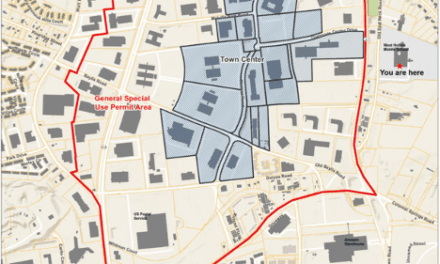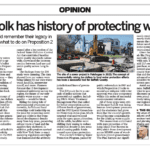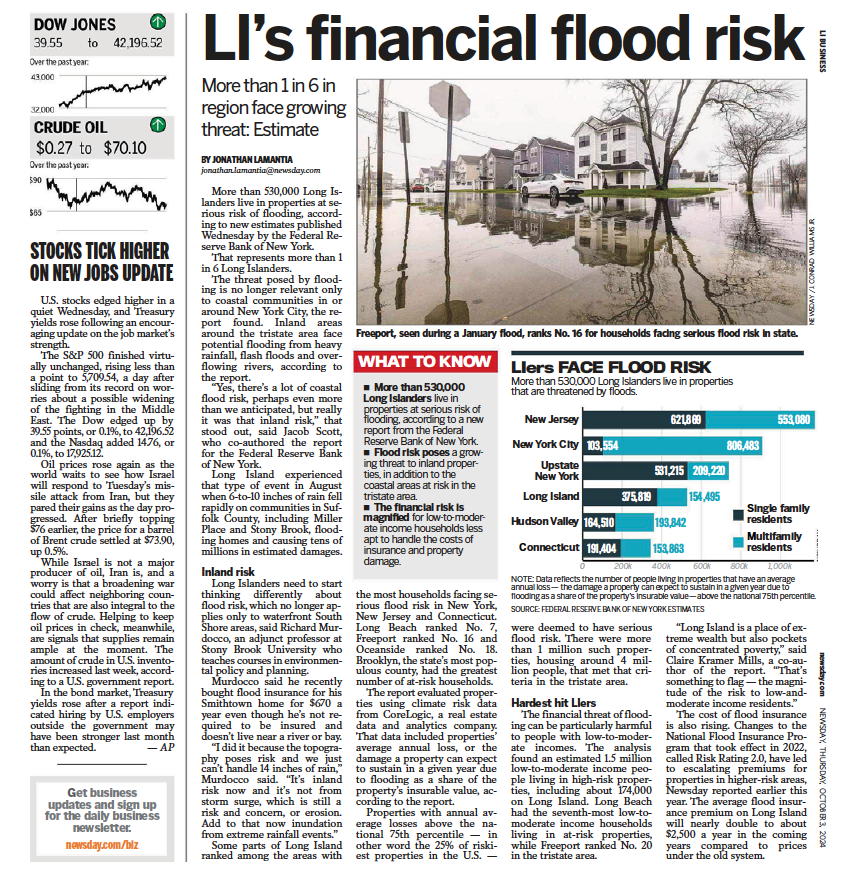The following was first published exclusively on The Foggiest Idea on March 30, 2018.
As Suffolk County Executive Steve Bellone touts his record of suburban transformation in a pair of identical op-eds in two different publications, Long Island continues to slowly suffocate under its own weight.
It’s not surprising that the county’s chief policymaker who has prioritized economic development over sound community-driven and environmental planning efforts might be a bit too quick to take a victory lap.
But, as John Adams once famously declared, facts are stubborn things. And despite the trumpeting from Bellone, the Regional Planning Association and other vested development-friendly interests who in recent years have stepped up their rhetoric of “build, build, build!” here, it is important to remember that the same kind of stubbornness applies for demographics and housing market trends.
Our region’s biggest challenges loom more menacingly than ever, yet Bellone penned a think piece to triumphantly announce that “a new suburbia is on the horizon.” To buttress his argument that a much-needed transformation is imminent, the county exec touts his yet-to-be funded Connect Long Island proposal, which would link downtown and hub areas with some kind of bus service, as well as the smattering of multifamily projects that have broken ground in recent years.
As if once weren’t enough, Bellone doubled down by letting both Long Island Business News and the Long Island Press run the same op-ed in March 2018.
Although it can be argued that Bellone’s “new suburbia” is on the horizon, it may not be the panacea so often touted when it actually arrives. Our groundwaters are increasingly being tainted by new pollutants, and the Sound and the sea are increasingly at risk due to the looming threat of global warming. Real estate development, when allowed recklessly, can amplify these impacts even further.
In recent years, the traditional model of suburban sprawl is being replaced with merely a new variant: just higher densities and rentals shoehorned in between the existing poorly planned subdivisions and worn-out shopping centers.
As the push for more development intensifies, the “brain drain” concept has begun to rear its ugly head again. The notion is that our young professionals are fleeing Long Island because they all supposedly can’t afford to live here. Even though this argument has wisely since fallen out of vogue in policymaking circles, development interests refuse to put this prized show pony back in the barn where it belongs.
Nevertheless, facts are obstinate. As it turns out, the youth aren’t fleeing our region; statistically birth rates have dipped. “Changes in birth and death patterns are increasingly important,” The New York Times’s Robert Gebeloff wrote in March 2018, contending that younger people are having fewer children and the Boomer generation is getting older. As the old adage goes in demographics: How can people leave if they never were born to begin with?
Then there is the pricing of these shiny new units.
Rents on Long Island can easily top $2,000 a month—nearly a mortgage payment in some communities—and that does little to help the under-employed millennials, who are weighed down by college debt and are the very same young professionals that the Suffolk County exec and others so often boast about trying to retain.
To say that the latest slate of luxury projects on Long Island will benefit struggling young professionals is rather disingenuous. As it turns out, the Island not only lacks enough housing options, it especially lacks the types of housing that young professionals and families want most.
The intensity of the real estate market, driven by the scarcity of affordable inventory, shows that even millennials aren’t shying away from what traditional suburbia has to offer. In recent years, residential prices have risen as an increasing number of affluent millennials stretch their economic legs. That’s great for those who can afford it – but what has been done to help those who can’t?
Given the scale of the large multifamily projects that have been approved in recent years, progress—or a certain developer-friendly definition of it—has been made. But no developers or policymakers have taken definitive ownership over the pricing issue. Nor are these builders and policymakers arguing vigorously for sustainable fiscal growth, which could be brought in through the creation of more well-paying, long-lasting jobs.
To his credit, Bellone did break ground on some affordable projects near the Long Island Rail Road’s Speonk station. Further west, however, where Long Islanders are more likely to take the LIRR to a decent paying job in Manhattan, the picture is a bleaker. In one Mineola project near the LIRR, a 586-square-foot apartment is for rent at $2,256. At another project in Amityville, 900-square-feet goes for over $2,200, and the place doesn’t even have direct transit access.
It seems that the market disconnect between pricing and affordability continues to go unnoticed, or worse, ignored.
But the greater question that should be addressed is how can pushing density solve Long Island’s environmental and housing issues?
Does higher density solve all woes? Not necessarily. Just ask residents in any of the five boroughs. Building our way out of economic and environmental challenges doesn’t work in New York City, and it won’t work for Long Island.
Richard Murdocco is an award-winning columnist and adjunct professor in Stony Brook University’s public policy graduate program. He regularly writes and speaks about Long Island’s real estate development issues. More of his views can be found on thefoggiestidea.org or follow him on Twitter @thefoggiestidea. You can email Murdocco at Rich@TheFoggiestIdea.org.











You hit it again right on the head. Bellone merging planning with economic dept has lead to toxic development.
We need to look back to development of towns before the coming of the car. Study the concept of town centers. Could struggling malls be solved by breaking up their anchor tenants and moving them to town centers almost like how it used to be 100 years ago? When the important good and services are near or around a town center, whether that be in a hamlet business district or a town center, would be logical then to do higher density? It seems like up until the car, this was the way Long Island was headed: centralized towns near railroad stations.
And if over generations people shift their style of living to this denser way at a town center, could land open for reclamation process of preservation?